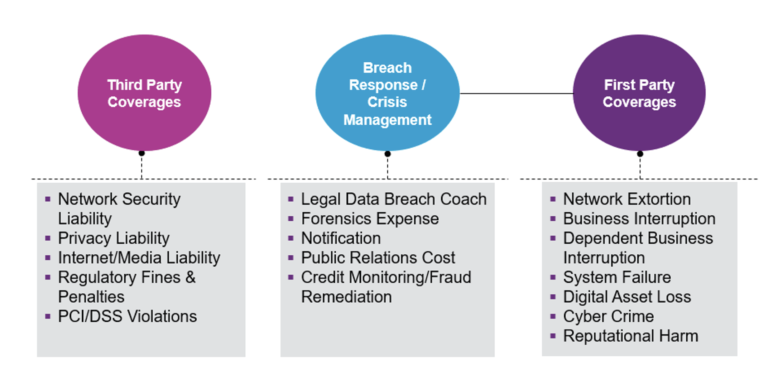Child Life Insurance: Benefits for Your Child’s Future
Child life insurance, often referred to as juvenile life insurance, is a vital financial tool that provides coverage for children, ensuring their future financial security. While many may associate life insurance primarily with adults, the benefits of child life insurance extend far beyond mere coverage; it offers peace of mind and investment opportunities for families. One of the significant advantages is securing future insurability, as unforeseen health issues may arise as children grow older. Additionally, these policies can build cash value over time, serving as a financial asset for future milestones like college or a first home. Understanding the nuances of life insurance for kids can empower parents to make informed decisions that safeguard their child’s financial future.
When considering insurance options for younger family members, the concept of child insurance policies emerges as a crucial discussion point. Also known as juvenile insurance, these policies are designed to protect children from unforeseen circumstances while simultaneously providing a pathway for financial growth. The advantages of such coverage include securing the child’s ability to obtain insurance later in life, as well as building a cash reserve that can be tapped into for significant expenses. Not only do these policies offer a death benefit, but they also ensure that your child’s future insurability remains intact, regardless of health changes. Exploring these options can lead to a well-rounded financial strategy that benefits both parents and children.
The Importance of Child Life Insurance for Your Family
Child life insurance serves as a vital component of financial planning for families. While discussing life insurance often focuses on adults, securing a policy for children can provide immense peace of mind. In the tragic event of a child’s passing, the financial support from a child life insurance policy can help cover costs like funeral services and medical bills. This type of coverage allows parents to navigate an emotionally challenging time without the added burden of financial strain.
Moreover, child life insurance isn’t just about covering potential costs; it can also act as a long-term investment. As the child grows, the policy accumulates cash value that can be borrowed against or used for major life events. This can include funding higher education, purchasing a first vehicle, or even making a down payment on a home. By starting early, families can build a financial safety net that supports their child’s future dreams and aspirations.
Exploring the Benefits of Juvenile Life Insurance
Juvenile life insurance, also known as child life insurance, offers several key benefits that parents should consider. One of the most significant advantages is the guarantee of future insurability. Children can develop health conditions as they grow, potentially making it difficult to obtain life insurance later in life. By securing a policy during their youth, parents ensure that their children remain insurable, regardless of future health complications.
Additionally, juvenile life insurance provides a unique opportunity to lock in lower premiums. Life insurance rates are typically based on age and health; thus, the earlier a policy is purchased, the more affordable it tends to be. This financial foresight not only safeguards the child’s future but also allows parents to manage their budget effectively while investing in their child’s long-term financial wellbeing.
Building Cash Value with Child Insurance Policies
Child insurance policies are not just about providing a death benefit; they also allow parents to build cash value over time. This cash accumulation can be a powerful financial asset, offering flexibility as children reach significant milestones in life. Whether it’s funding a college education or assisting with a major purchase, the cash value can serve as a valuable resource.
The process of accumulating cash value means that as the policy matures, families can leverage this asset for various needs. For example, parents may choose to borrow against the cash value for urgent financial requirements or educational expenses. This dual benefit of life insurance policies—providing both a safety net and a financial tool—makes child life insurance a strategic component of any family’s financial planning.
Securing Future Insurability for Your Child
Future insurability is one of the most compelling reasons to consider child life insurance. By purchasing a policy for your child at a young age, you ensure that they have access to insurance coverage regardless of potential health issues that could arise later in life. This security is invaluable, as it protects against the uncertainty of future health conditions that could otherwise limit their insurance options.
Additionally, locking in coverage early allows families to benefit from lower premium rates. The younger and healthier the insured, the more favorable the insurance terms. This proactive approach to securing future insurability not only provides peace of mind but also fosters financial stability for your child as they transition into adulthood.
Understanding the Process of Obtaining Child Life Insurance
Acquiring a child life insurance policy is generally a straightforward process. Parents or grandparents can work with licensed insurance agents to explore the best options available for their children. Typically, the process involves filling out a questionnaire and reviewing the child’s medical history, although a physical examination is often not required for healthy children.
It is essential to understand the terms and conditions of the policy, including its cash value component and potential loan options. Parents should also be aware of any waiting periods that might apply, especially for children with health concerns. Engaging with an insurance professional can help clarify these details and lead to informed decision-making.
Child Life Insurance as an Investment for the Future
Investing in child life insurance is not just about providing a safety net; it’s also a strategic move towards financial planning. The cash value that builds up over time can be used for various life events, ensuring that your child has the resources they need as they grow. This investment can significantly ease the financial burden associated with higher education or home ownership in the future.
Moreover, child life insurance can serve as a legacy, instilling financial literacy and responsibility in children from a young age. As they grow, they can learn about managing this asset, making it a valuable part of their financial education. This approach not only secures their future but also equips them with the knowledge to manage their finances effectively.
Comparing Child Life Insurance Policies
When considering child life insurance, it’s essential to compare various policies to find the best fit for your family’s needs. Different insurers may offer varying benefits, premium rates, and cash value growth options. By evaluating multiple policies, parents can identify which plan aligns most closely with their financial goals and their child’s future needs.
It’s also important to look into the details of each policy’s structure, including the potential for premium increases and the terms for accessing cash value. Understanding these factors will help parents make an informed decision that maximizes the benefits of juvenile life insurance while ensuring their child’s future insurability.
The Role of Child Life Insurance in Family Financial Planning
Child life insurance plays a crucial role in comprehensive family financial planning. By including a child life insurance policy in your strategy, you not only protect against unforeseen circumstances but also lay the groundwork for a financially secure future. This type of insurance can complement other financial tools, such as savings accounts and investment portfolios.
Furthermore, as part of a holistic financial plan, child life insurance can provide parents with peace of mind. Knowing that there is a financial safety net in place allows families to focus on creating memorable experiences and achieving long-term goals, rather than worrying about potential financial setbacks.
Final Thoughts on Child Life Insurance Benefits
In conclusion, the benefits of child life insurance extend well beyond simply providing coverage. It serves as an investment in your child’s future, offering a safety net while building cash value that can be utilized in various ways. Whether it’s securing future insurability, providing for significant life milestones, or ensuring financial support in a time of need, child life insurance is a critical consideration for parents.
As families navigate their financial future, exploring child life insurance can be a vital step in ensuring their loved ones are protected. By understanding the importance of this coverage, parents can make informed decisions that contribute to their child’s financial wellbeing for years to come.
Frequently Asked Questions
What is child life insurance and how does it work?
Child life insurance, also known as juvenile life insurance, is a permanent policy that provides a death benefit in case of a child’s passing and builds cash value over time. It’s designed to ensure financial support for families during challenging times and can serve as a financial asset for future needs.
What are the benefits of child life insurance for my child?
The benefits of child life insurance include ensuring future insurability, accumulating cash value for significant expenses, and providing a death benefit if necessary. This type of policy helps secure a child’s access to insurance and offers financial support during unforeseen events.
How does future insurability work with child life insurance?
Future insurability with child life insurance guarantees that your child can maintain their coverage regardless of potential health issues that may arise as they grow older. By securing a policy early, you lock in lower premiums and safeguard their ability to get insurance in the future.
Is child life insurance a good investment?
Yes, child life insurance can be a good investment as it accumulates cash value over time, which can be utilized for significant life expenses like college tuition or a first car. It also provides peace of mind knowing that your child is financially protected.
How do I get a child life insurance policy for my child?
To obtain a child life insurance policy, parents or grandparents (with parental consent) can contact a licensed insurance agent. The process typically involves a questionnaire and may require a medical record review, but often does not necessitate a physical exam for healthy children.
Can I use the cash value of a child life insurance policy?
Yes, the cash value of a child life insurance policy can be accessed for various purposes. Policyholders can take loans against this value or cash it out, though it’s essential to consider potential tax implications and consult with an insurance professional for guidance.
What happens to a child life insurance policy if my child passes away?
If a child passes away while covered by a child life insurance policy, the death benefit will provide financial support to the family. This can cover expenses such as funeral costs, medical bills, or help establish a legacy in the child’s memory.
Are there any age restrictions for purchasing child life insurance?
Child life insurance can typically be purchased for children as young as two weeks old. There are no strict age restrictions, making it accessible for parents looking to secure their child’s future insurance and financial needs.
What types of expenses can the cash value from child life insurance cover?
The cash value accumulated in a child life insurance policy can cover a variety of expenses, including education costs, purchasing a car, or making a down payment on a home, thus providing financial flexibility for significant life milestones.
Can I cancel a child life insurance policy if I no longer need it?
Yes, child life insurance policies can be canceled at any time through cash surrendering or stopping premium payments. However, it’s important to understand the potential tax implications and the impact on accumulated cash value.
| Key Point | Description |
|---|---|
| What is Child Life Insurance? | A type of life insurance covering children, providing death benefits and cash value accumulation. |
| Future Insurability | Secures coverage for children, preventing potential insurability issues in adulthood. |
| Cash Value | Accumulated cash value can be used for significant expenses like education or first car. |
| Death Benefit | Provides financial support for funeral and medical expenses in case of a child’s passing. |
| Obtaining Policies | Easy to acquire for healthy children through licensed agents; no physical exam usually needed. |
Summary
Child life insurance is a vital consideration for families looking to secure their children’s financial future. This unique type of insurance not only provides a death benefit in the unfortunate event of a child’s passing, but it also builds cash value that can serve as a financial asset for significant life events. Ensuring your child’s future insurability and providing peace of mind during difficult times highlights the importance of child life insurance for parents and grandparents alike.







